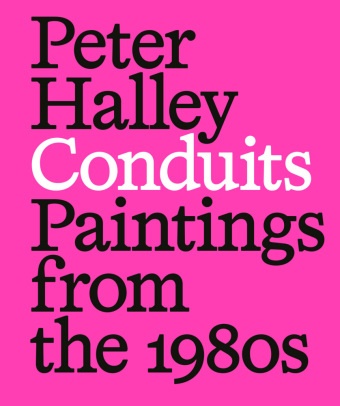Ulteriori informazioni
In 1980 Peter Halley painted his first "prisons," re-deploying the language of geometric abstraction in response to physical and bureaucratic environments. Radically deconstructing the language of abstraction, he re-imagined it not as a utopian source of liberation, but as a dystopian symbol of the regulation of physical and social space. As he wrote in 1990: "I wanted to draw attention to this geometricised, rationalised, quantified world. I saw it as a world characterised by efficiency, by regimentation of movement, bureaucracies, whether in the corporation, government, or university."
Working in the era of the mass adoption of personal computers and the advent of the Internet, he developed a tightly organized system of discrete, geometric forms that he refers to as "prisons," "conduits," and "cells." Adopting non-traditional materials such as Roll- A-Tex, a paint additive that provides a readymade texture, and Day-Glo fluorescent colors, he referenced a pervasive mechanization of the human touch and technology in the postmodern environment. Set within the context of a prolific period of painting and critical writing in the 1980s, this catalogue traces the development of Halley's singular pictorial vocabulary.
PETER HALLEY (*1953, New York City) is a central figure of the Neo-Geo movement and the East Village art scene of the 1980s. After studying in Yale and New Orleans, he became known for his geometric abstractions as well as for his critical writings influenced by post-structuralist theory, in which he linked the digital revolution, New Wave and visual arts. From 1996 - 2005 he was the publisher of index magazine, a landmark platform of indie culture in that era.
Riassunto
In 1980 Peter Halley painted his first “prisons,” re-deploying the language of geometric abstraction in response to physical and bureaucratic environments. Radically deconstructing the language of abstraction, he re-imagined it not as a utopian source of liberation, but as a dystopian symbol of the regulation of physical and social space. As he wrote in 1990: “I wanted to draw attention to this geometricised, rationalised, quantified world. I saw it as a world characterised by efficiency, by regimentation of movement, bureaucracies, whether in the corporation, government, or university.”
Working in the era of the mass adoption of personal computers and the advent of the Internet, he developed a tightly organized system of discrete, geometric forms that he refers to as “prisons,” “conduits,” and “cells.” Adopting non-traditional materials such as Roll- A-Tex, a paint additive that provides a readymade texture, and Day-Glo fluorescent colors, he referenced a pervasive mechanization of the human touch and technology in the postmodern environment. Set within the context of a prolific period of painting and critical writing in the 1980s, this catalogue traces the development of Halley’s singular pictorial vocabulary.
PETER HALLEY (*1953, New York City) is a central figure of the Neo-Geo movement and the East Village art scene of the 1980s. After studying in Yale and New Orleans, he became known for his geometric abstractions as well as for his critical writings influenced by post-structuralist theory, in which he linked the digital revolution, New Wave and visual arts. From 1996 – 2005 he was the publisher of index magazine, a landmark platform of indie culture in that era.

